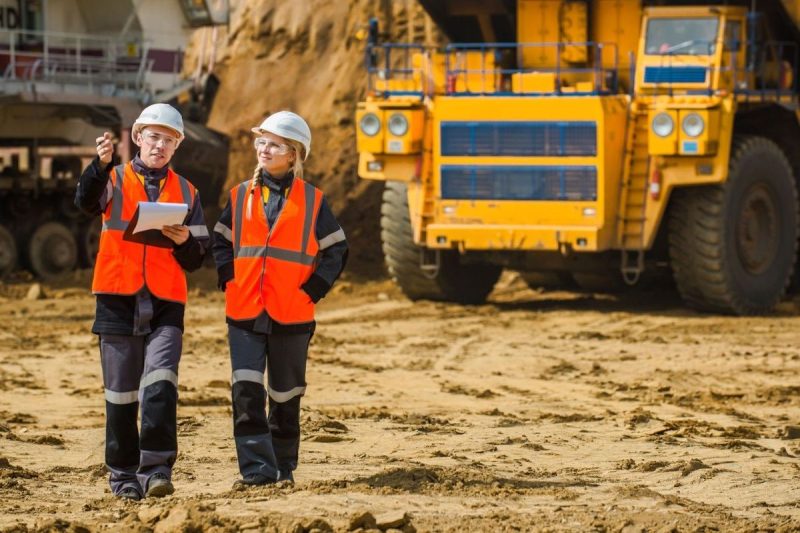
What are Prefeasibility and Feasibility Studies? (Updated 2024)
Resource investors new to the market might see quite a few unfamiliar phrases in news releases. Prefeasibility and feasibility studies are definitely two key mining terms to know.
Prefeasibility and feasibility studies are inherently linked to each other — understanding their differences creates a clearer idea of what they are and how they’re used. Their key similarity is that they represent milestones for mining and exploration companies.
On that note, let’s take a closer look at what exactly prefeasibility and feasibility studies are, as well as how they fit into company plans and the lifecycle of a mining project.
What is a prefeasibility study?
A prefeasibility study (PFS) is an early stage analysis of a potential mining project. These studies are conducted by a small team and are designed to give company stakeholders the basic information they need to greenlight a project or choose between potential investments. They typically give an overview of a mining project’s logistics, capital requirements, key challenges and other information deemed important to the decision-making process, such as whether the operation will be open pit or underground.
What comes before a prefeasibility study?
Prefeasibility studies are usually preceded by sufficient mineral exploration work, including drilling, to inform a mineral resource report, a potential model of the orebody and a scoping study.
What is a scoping study?
A scoping study, also known as a preliminary economic assessment or a PEA, is a study that includes initial technical and economic analysis of the potential viability of a project’s mineral resources.
PEAs should include base-case data on the capital costs associated with bringing a project into production, an estimate of how the mine will operate once it is built, how much metal and money it will produce and what operating costs it will incur. PEAs help mining companies understand risks and uncertainties associated with a project by providing information on pre-production capital costs, life-of-mine sustaining capital, mine life and cash flow, as well as details on processing and production methods and rates.
When and why do companies undertake prefeasibility studies?
Following a preliminary mineral resource report and the creation of an orebody model, a PFS acts as one of the first explorations of a potential investment. Companies use these studies to collect information before investing millions of dollars into tasks like acquiring permits or research equipment.
What information does a prefeasibility study include?
In addition to information relating to geological models and mine design, prefeasibility studies take into account factors that may impact or interfere with the final project. That can involve community issues, geographic obstacles, permit challenges and more.
A comprehensive PFS should include detailed designs and descriptions for the mining operation, as well as cost estimates, project risks, safety issues and other important information. There should also be multiple options included in the study for tackling different issues, as that will provide organizations with more ways to overcome potential challenges.
What happens if prefeasibility study results are positive? Negative?
If a PFS shows a positive base-case scenario, the company will likely move on to the next stage, a feasibility study. If the study is negative, an organization may head back to the drawing board or abandon the potential project altogether.
What is a feasibility study?
A feasibility study is an in-depth evaluation of a mining project with and established mineral resource. These studies are intended to evaluate if a mineral reserve can be mined effectively and if it will be profitable. Detailed mining feasibility studies are also used as the basis for a project’s capital estimates, operating costs and overall economic viability.
What is the difference between prefeasibility and feasibility studies?
While the cover many of the same topics, the main difference between prefeasibility and feasibility studies is that the latter are meant to be much more accurate and require more resources to complete. Feasibility studies should offer estimates that are within 10 to 20 percent accuracy, whereas prefeasibility studies are allowed to run between 20 and 30 percent.
When and why do companies undertake feasibility studies?
At this point in the process, organizations already have large sums of money at stake and a drive to see their project through to completion. Feasibility studies are all about reducing risks and addressing potential issues that may complicate a mining project. The studies also include information that is helpful for stakeholders such as local governments or environmental analysts.
In a guide to feasibility studies, Don Hofstrand and Mary Holz-Clause of Iowa State University note, “A feasibility study is usually conducted after producers have discussed a series of business ideas or scenarios.” The number of business alternatives being considered can be reduced from here.
What information do feasibility studies include?
Feasibility studies cover many important points, including economic, legal, operational and scheduling issues. Feasibility studies should be able to address questions across these topics and feature information about the technical feasibility of a project, as well as how much it will cost, whether it’s in accordance with the law, how operations will work and when it can be completed.
Market analysis research can also be a vital part of the feasibility study phase. This type of research is intended to ensure that there is demand for the metal or commodity a project may produce. Market research also helps to zero in on competition in the marketplace. This type of information on markets and demand is especially valuable for investors.
What happens if the feasibility study results are positive? Negative?
Feasibility studies act as tools that provide CEOs and mining engineers with as much detailed information as possible to make intelligent and strategic decisions regarding the development of a project. Positive results will likely move the project forward as is. Decisions will vary, but reactions to negative results can include choices like canceling projects, bringing in partners, increasing investment or changing schedules.
Why should investors care?
Both prefeasibility and feasibility studies can provide investors with useful updates on the progress of a company’s project. These studies help create a more concrete picture about a company’s milestones and challenges moving forward.
Securities Disclosure: I, Melissa Pistilli, hold no direct investment interest in any company mentioned in this article.
